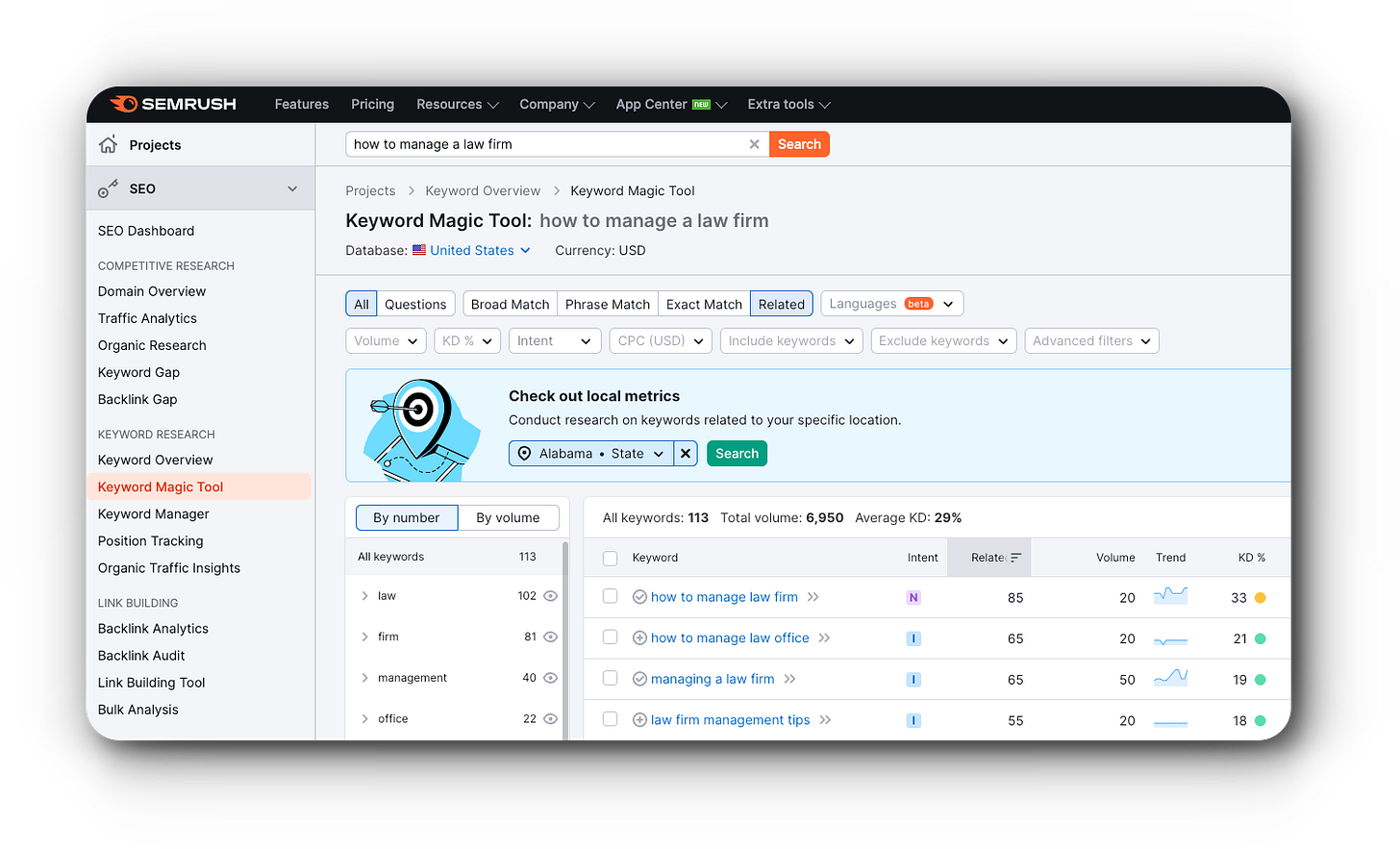First Mover's Advantage: SEO Strategy for a Product Category That Doesn't Exist Yet
SEO is all about capturing the existing interest of potential customers. But what if I'm working on a product that's pioneering a new category and has no search volume yet? Here's the plan...
Here goes…
Good news - you’re developing a groundbreaking product that's set to make a significant impact.
Bad news - currently, no one is searching for this product because they're unaware of its existence.
Great news - with SEO, you can strategically guide your target audience to your innovative solution, positioning yourself to lead in emerging search terms with minimal effort.
Here’s the strategy:
1. Publish content in related categories with high search volume
Even though you might not see any search volume for the keywords connected to your product, there is already an audience for it (NB: assuming that you're working on a product that solves an actual problem and has a product-market fit).
The first goal is to determine who that audience is (buyer personas) and which search terms they are currently using to find solutions for these problems.
Who is the decision-maker searching for a solution via Google?
If possible, talk to your current customers to determine the typical decision-makers whose jobs depend on finding a solution to the same core problem you are addressing.
What current solutions for the core problem are being searched for?
If the problem is genuine, there must be some solutions that your ideal target group is already using to address it (even if those solutions suck). Map all these solutions and related keywords, ideally by speaking with your customers again.
NB: Your product doesn't need to align with these solutions.
Example: Before SaaS tools existed for managing law firms, potential customers searched for “Excel templates for managing X in a law firm” and general best practices with queries like “how to manage a law firm”.
Compile a list of "old category terms" using SEMrush or a similar tool
Leverage the Keyword Research features to identify related keywords and determine search volumes, drawing from your previously mapped decision-makers, their challenges, and former solutions.

Create content that serves the right search intent and guides the customer to learn more about your product
In order to start ranking for these “old” category terms, you have to create super valuable content that serves the searcher’s original intent.
For example: if you’re targeting a term “Excel templates for [X purpose]”, you have to provide these templates within your content (and make them more valuable than the current top-ranking articles on Google).
Redirect the readers to your solution
The key part of this strategy is adding a paragraph to the content piece that offers an overview of alternative solutions - including your SaaS tool that replaces the need to use an Excel template.
Make this paragraph contextually relevant to the original query and helpful for the reader. Don’t be overly salesy here.
Start introducing the “new terms” in your content
When you’re adding a paragraph explaining the new innovative solutions, start using the new terms that are related to your product category that are not being searched yet, and link them to your glossary/wiki pages (see the next step).
2. Create a glossary and a wiki/knowledge base for introducing the new terms and concepts
Create a list of industry and product-related terms and concepts that you’ll cover with glossary pages and wiki articles. This list should include all the relevant keywords that right now have zero search volume but are commonly used by your team and you’re confident that the potential customers will start Googling soon enough too.
You can set up the glossary pages and wiki articles separately with a new CMS install (for example, you can use a special Wordpress theme template) that’s operated separately from your blog engine.
NB: install this on a subdirectory, not on a subdomain.
The other option is to keep using your existing blog and just apply special category tags for glossary pages (for example “definitions”, or “terms”) and wiki/knowledge base articles (for example “wiki” or “knowledge base” or “basics”).
Make interlinking part of your routine
Start using these terms and concepts in your other content - blog articles targeting high-volume keywords (see step 1 above), sales materials, landing pages, etc - and link the mentions to the glossary/wiki pages.
Make it a habit to find articles for relevant interlinking every time you have a bunch of new content published (for example, take 15-30 minutes just to do interlinking every month).
3. Write and publish content on steroids
Ok, now that we have the strategic part figured out, we need to make sure that all of this great content actually gets written and published.
If you want to see results, you need to create a lot of great content and keep doing it week after week for months (and even years).
How much content is needed and how to get to that level?
Start with the goal of publishing 10 articles/pages per month and once you have this volume figured out, continue with 15-20 articles per month.
Here are some popular options that I have tried and would recommend:
make your team write - especially the glossary/wiki/knowledge base content where industry expertise is crucial
hire an in-house content manager who manages 5-10 freelance content writers
give them clear goals and a strategy to follow (PS: I can help with this part. Just book a call with me.)
give them a proper budget for content writing and for some paid promotion
hire an agency that takes care of it all for you, but be ready to spend some serious money on it.
NB: don’t forget that this content needs to be top-notch. No 1-click AI-generated bs or any other “hacks” that don’t add any value. Each of the 10 monthly articles has to be the BEST article on the topic (compared to the current top-ranking ones).
Conclusion
To summarize, all you need to do is:
create top-notch content for existing search queries that are being used by your ideal target group in the same general niche
subtly redirect this traffic to your solution with a paragraph that is contextually tied to the original search intent
create a glossary and wiki/knowledge base - and make your team write these content pieces
interlink these pages and educate the readers on these new terms and concepts
find resources to consistently publish 10-20 content pieces every month
Simple.
…but not easy.
So if you need any help, reach out to me.




